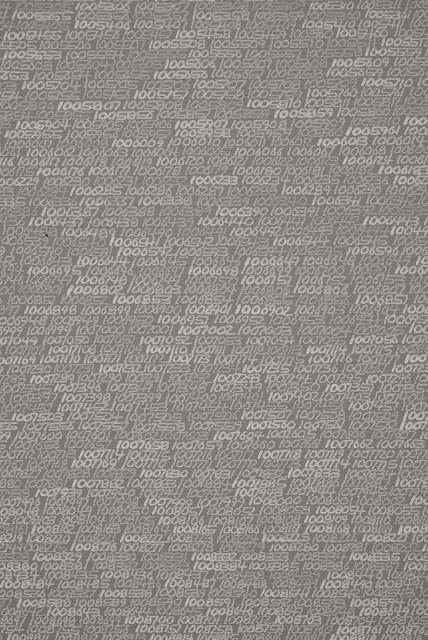An unfinished work by Reubens:
There was a wonderful room of late Turner paintings which were apparently thought of as unfinished after his death and eventually consigned to the Tate's attic. Now, of course, we don't think of them as unfinished. Or do we?
This Klimt is clearly unfinished, but I found it to be a nicely subversive version of the Klimt paintings that have become all too iconic these days.
In the 20th century portions of the exhibit, the notion of unfinished becomes more philosophical.
Witness this grayish work by Roman Opalka, which from a distance looks like this:
Looking closer, this is what you see:
He had the notion of writing out the numbers to visualize infinity. He never got there...
Then there is Cezanne..
And Picasso:
And did I mention Rembrandt, Michelangelo, and Leonardo da Vinci?
A truly spectacular exhibition...
Postscript:
It was interesting to read the New York Times art critic's takes on this show. There were many contemporary woman artists in the show, so they couldn't complain about that. But they did complain about the lack of Non-European works in the show, or as Roberta Smith put it, leaving "....the Met very much in its comfort zone, with older art in a hermetically sealed Eurocentric bubble." Really! The Met must be the most non-Eurocentric museum in New York, as they exhibit and treat with great respect art from all cultures. And the curators even addressed the issue in an interview, mentioning that the notion of "unfinished" became even more complex and problematic when other cultures were involved.
























